Some Things Get Better with Age
A beloved classic recently celebrated a birthday by receiving a wonderful upgrade. The time has never been better to discover or re-experience Machi Koro’s dice rolling, engine building goodness for yourself. You will have to roll well and plan even better if you wish to be the first to build your four landmarks and be victorious in this fast-paced, city building challenge. Players compete to build various building cards that will grant rewards when dice results happen. Each builder will take turns rolling the dice, collecting rewards and working to build additional buildings to increase the effectiveness of their personal city’s engine. The first player to build their four landmark cards is crowned the winner! Let’s jump in and review the types of buildings you can employ to make Machi Koro thrive.
If You Build it They Will Come!
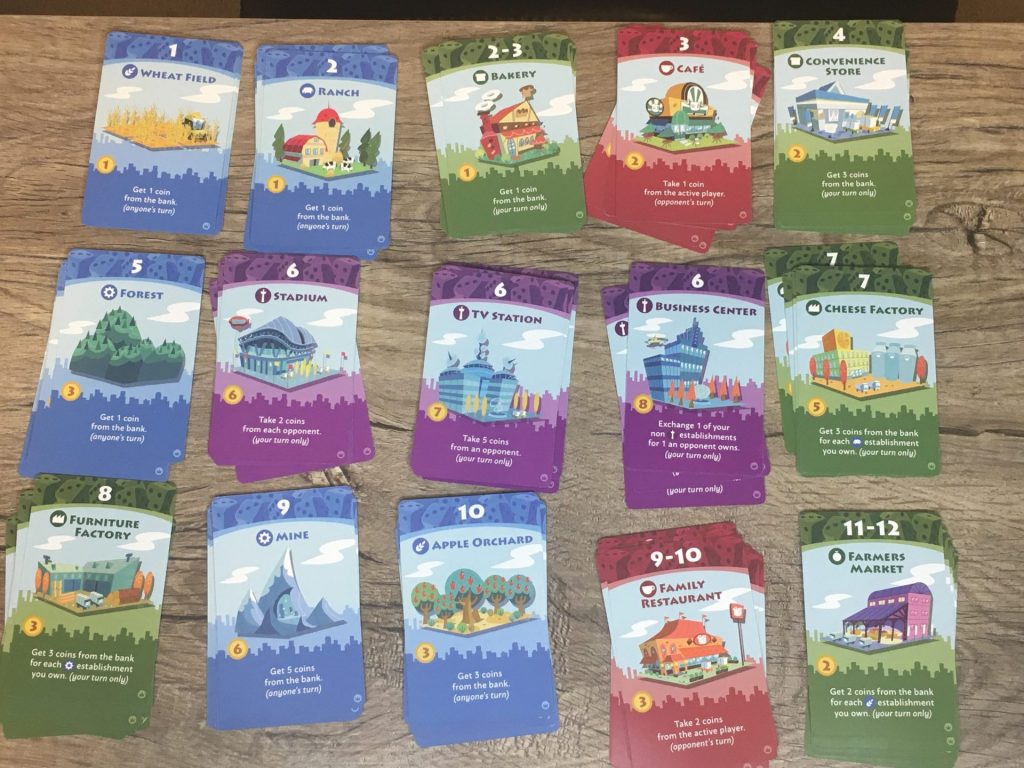
As you go through the rounds of play in Machi Koro, you will be buying and adding buildings (cards) to your city to gain more and more income based on your die rolls as well as those of your opponents. Cards can activate on your own turn or your opponents’, but you can only ever buy new ones on your actual turn. There are five types of cards in Machi Koro.
Blue Cards (Primary Industry): Blue cards are always active and reward the owner anytime their respective number is rolled, even on an opponent’s turn. They will activate the most frequently, which offsets their less potent rewards.
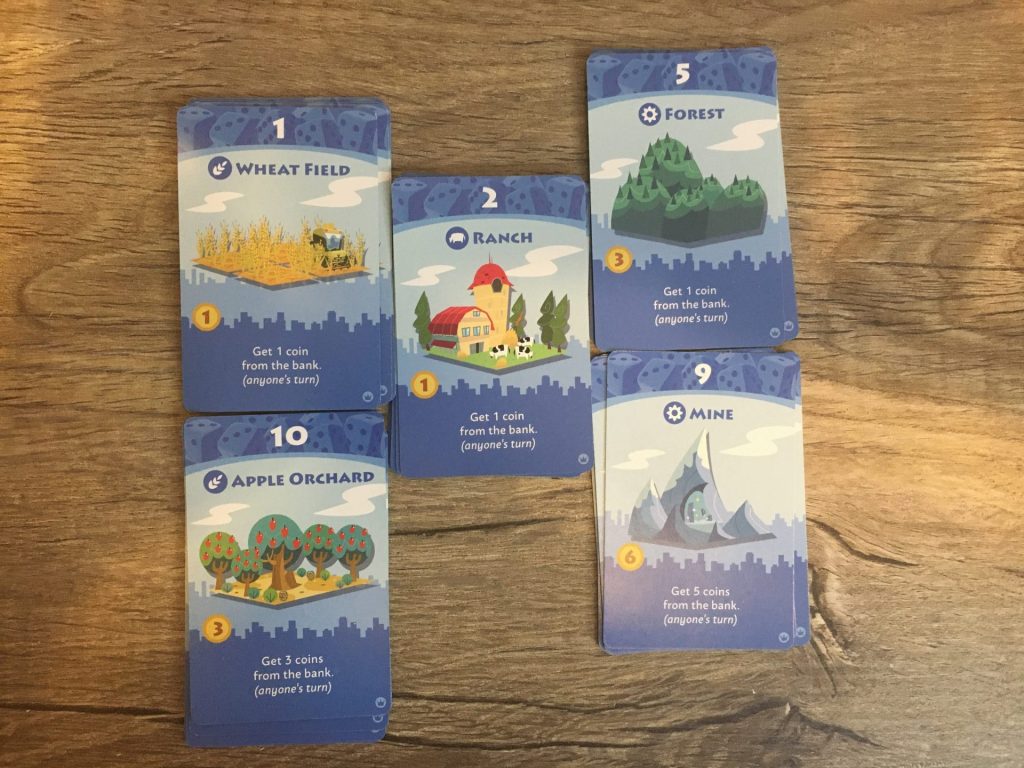
Green Cards (Secondary Industry): Green cards are the selfish older sibling of blue cards; these cards offer a somewhat larger reward but only on the owner’s own roll. These will quickly become a staple for how you generate income.

Red Cards (Restaurants): Red cards add just a small amount of ‘take that’ to Machi Koro. Red cards only trigger on opponents’ turns and penalize them for their dice roll. If an opponent rolls a number corresponding to your red card, its effect will trigger, usually allowing you to steal money from that player. These cards offer a way to rein in someone who may have built a lot of buildings that play off of a single die result.

Purple Cards (Major Establishment): Purple cards offer a grab bag of effects. These cards only trigger on the owner’s turn but can do all sorts of things from stealing money from other players to switching buildings between players. These cards can allow you to add a bit of asymmetry into how you play.
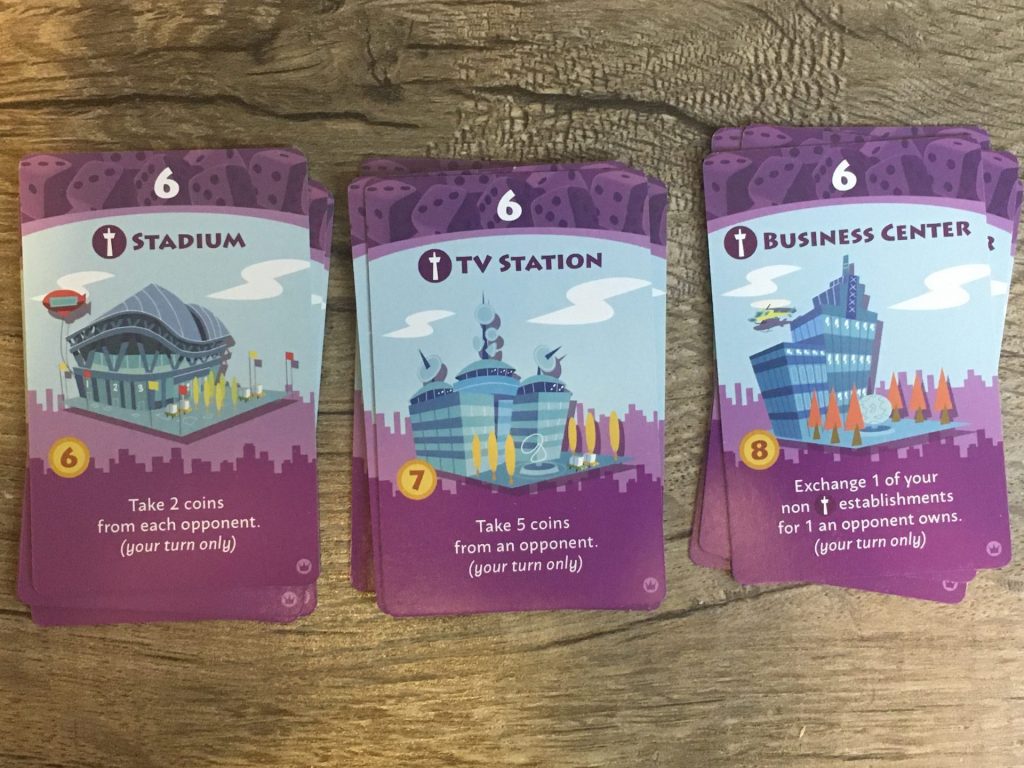
Landmark Cards: Each player starts the game with four unbuilt landmarks. These buildings are expensive but do offer incredible passive bonuses once you build them. The first player to complete their four buildings is crowned the winner so there’s no reason to be too stingy with your money!

The various cards activate on dice rolls from 1-12; the higher the number, the greater the reward. Since you start the game only able to roll one die, many of the cards won’t be useful until you gain the ability to roll a second by completing a landmark. There are lots of interesting strategies that present themselves to players here. Do you stick with one die to increase your chances of hitting the same number or upgrade to two dice so you can get those more powerful cards? Do you load up on a single type of card so when you roll that number it’s like hitting the lottery, or do you diversify and play it safe and consistent? No matter what you choose, you better get building landmarks before some other upstart architect beats you to it!
A Legacy of Fun
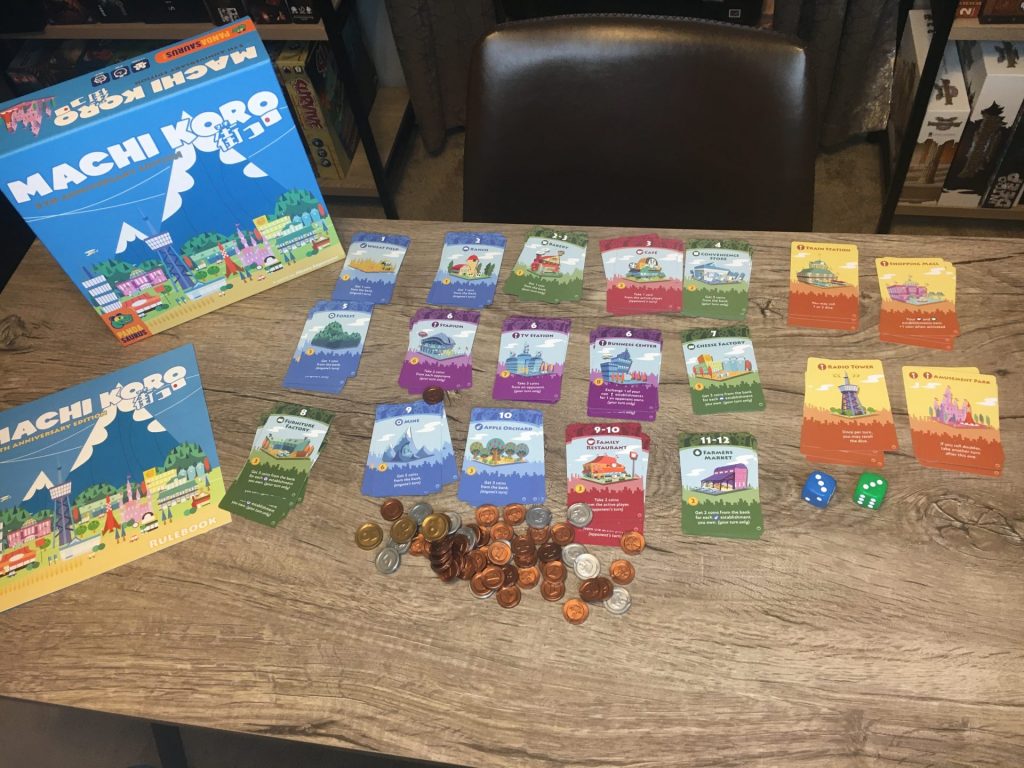
Nominated for the SdJ all the way back in 2015, Machi Koro hits a sweet spot of entry-level engagement without sacrificing some deeper nuances of strategy. The integration of luck with a bit of strategy and mitigation really makes it the dice rolling engine builder that could. Each strategy and decision offers some tactical depth, all while feeling you are at the mercy of the dice just enough to keep things interesting. Games play quickly but have a satisfying layer of thought to them so that you will keep coming back for more.
I have had Machi Koro in my personal collection since 2017 and have always enjoyed it, so I was excited to try out this new edition. It really captivated me then, as a new gamer, with its limited downtime and interactions spawned by the blue and red cards activating on other players’ turns. This keeps Machi Koro fun, engaging and evolving. It has been great to see this title evolve over the years with the standalone Bright Lights, Big City version, Machi Koro Legacy, and now this anniversary edition. Each iteration just adds polish or bling to a title that has a rock-solid foundation of good mechanics, a fun theme, and high replayability.
The 5th Anniversary Edition is no exception. It updates the card size and adds satisfyingly chunky coins to play with. It is worth noting that this change in card size does mean the previous expansions will not adapt perfectly, so you will need to repurchase them for the new addition.
There is not much in the way of cons that I can share about Machi Koro. It is dice-based so luck will always be a factor. Aside from that, the base game does offer a limited selection of cards so things may feel a bit predictable by your thirtieth game. This is easily offset by the expansions, which will spice things back up. These are small worries though as I feel Machi Koro, for its price, depth level and aesthetic offers a lot of quality. If you like engine building games, this title will certainly please you. If you have never played an engine builder where dice trigger your abilities, then you are in for a great treat with Machi Koro. It is the type of game that new and veteran gamers alike can enjoy and, dare I say it, should be considered a staple in a board gamer’s collection.
Machi Koro
Genre: Engine Building
Pros: Light, Engaging, Replayable, Accessible
Cons: Luck based, Predictability
Rating: 8/10 A quality addition to any gamer’s collection.


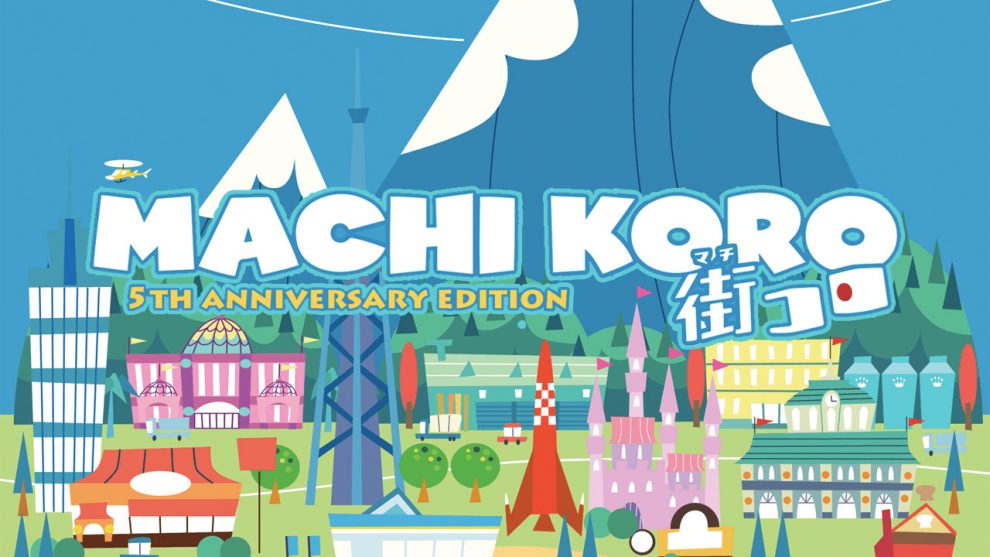









Add Comment